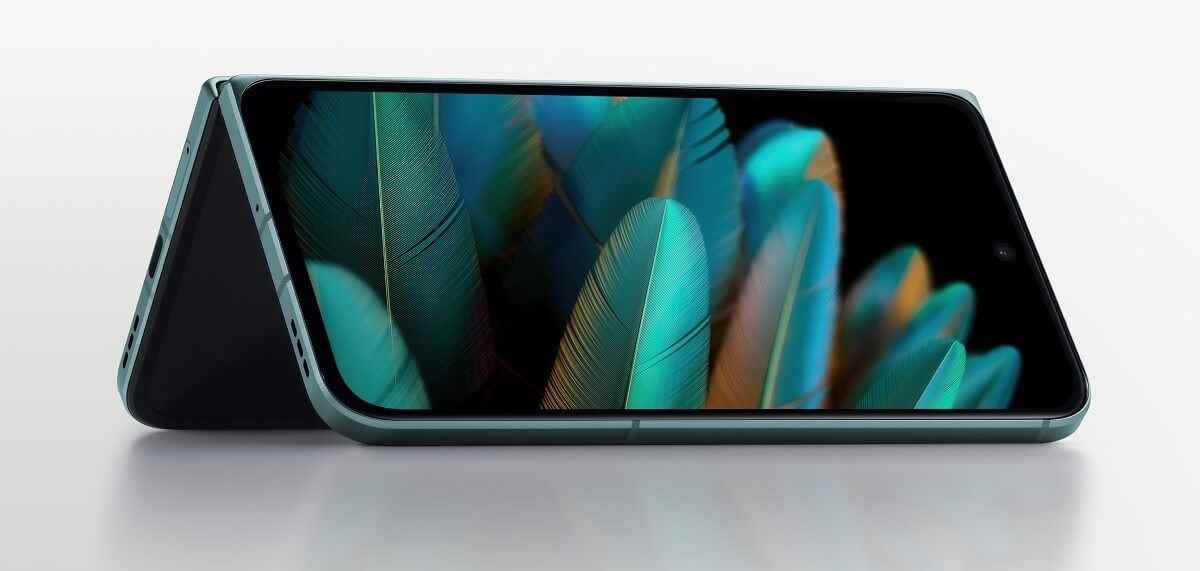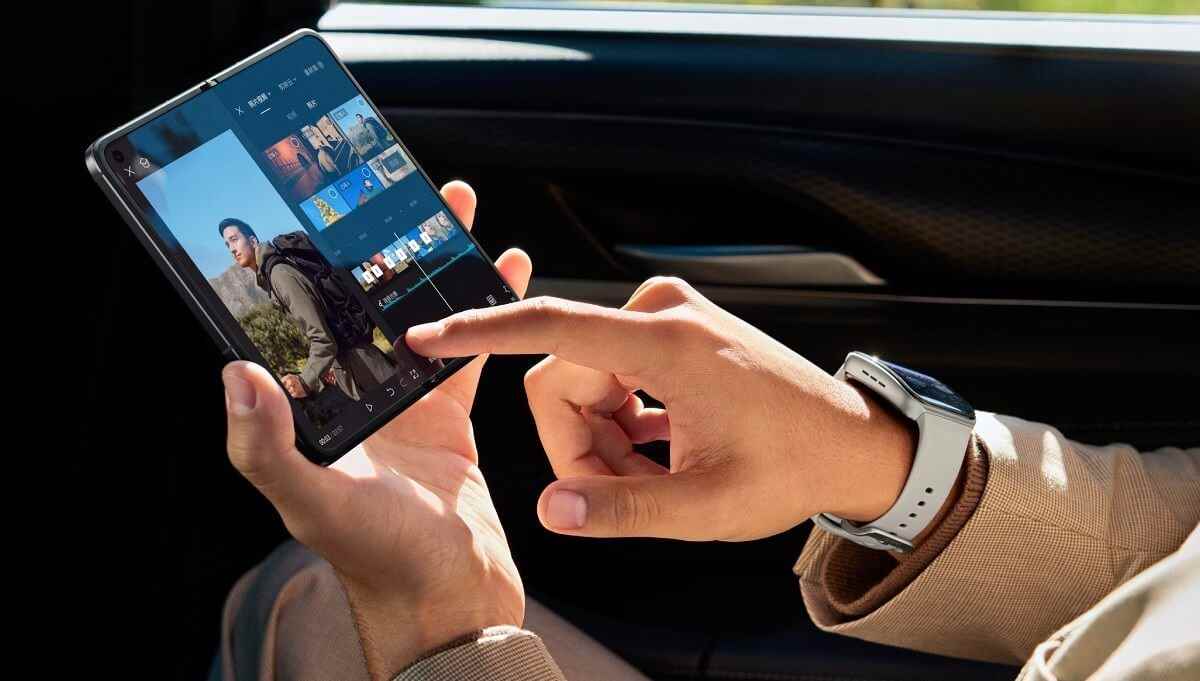Original Oppo Find NWhile we liked the width and height of the . the bigger Galaxy Z Fold4It was bigger than . Oppowhile addressing these concerns with the second generation model, it also improved the cover image.
There are many more improvements as well, but before we dive into the details, we should point out that Oppo is also unveiling its first foldable today – you don’t want to miss it, as it’s getting an international release.
Oppo Find N2
Oppo Find N2 is 72.6mm thin when closed and is slightly narrower than its predecessor. More importantly, the device now weighs just 233g thanks to the greatly improved hinge design. Also, the thickness is 14.6mm when closed and 7.4mm when opened (Previous version was 15.9mm and 8.0mm).
The metal frame comes in three styles – matte white and mint green (they have glass backs and are slightly heavier, 237g) and there’s also a black option with vegan leather backing.
The second generation Flexible hinge has been greatly improved. For one, it has 138 fewer parts than 100. Second, it uses advanced materials such as carbon fiber and a high-strength alloy. All this helps to reduce the weight of the phone.
The new hinge design also reduces the crease by 67%, making it less visible. The hinge can hold any angle between 45° and 125°, this has a few use cases, but we’ll get to those.
The cover also overhauled the display. It’s still roughly the same size, but the aspect ratio is a bit messy at 17.7:9 (instead of 18:9). Despite this, the phone is narrower than its predecessor as Oppo trimmed the bezels. The 5.54” cover display now also supports 120Hz refresh rate. It’s also very bright and protected by Gorilla Glass Victus, peaking at 1,350nits.

The internal display has the same dimensions, 7.1” and a square 9.6:9 aspect ratio. This is an LTPO panel, so the refresh rate can range from 1 Hz to 120 Hz. Both displays have a touch sampling rate of 480Hz. The screen is even brighter than on the lid, with a peak of 1,550 nits.
In addition, Oppo has placed an anti-reflective film on the screen to improve screen readability in bright ambient light conditions, even at low brightness settings. Both displays support HDR10+ and use color sensors to adjust their images according to lighting conditions.

Like its predecessor, Oppo Find N2 offers triple cameras and two selfie cameras. The main module has been upgraded to Sony IMX890, a 50MP 1/1.56” sensor sitting behind an f/1.8 24mm lens with OIS. This replaces the same size IMX766.
The ultra-wide camera has received an even bigger update with a 48 MP IMX581 1/2” sensor behind an f/2.2 14mm lens. As a reminder, the original Find N had a 16MP 1/3.09” sensor.

Then there’s the telephoto camera that switches to a 32MP IMX709 sensor (1/2.74”, upgraded from 13MP 1/3.4”). This sensor has an RGBW filter that allows it to gather more light. Better still, it’s paired with a brighter f/2.0 aperture (the Find N had a 13MP f/2.4 tele camera). The focal length is on the short side, at 47mm shorter than the previous model (52mm). Still, perhaps the upgrades are enough to avoid the original Find N issue that switched from the main camera to upscaling images in the dark.
It has two identical selfie cameras, one on the cover screen and one on the inside, both with 32MP sensors.
The camera system is powered by MariSilicon X and co-developed with Hasselblad. Professional mode uses algorithms that match the Hasselblad Natural Color Solution found in cameras of the same name. The Xpan mode is inspired by the eponymous panorama camera that uses 35mm film but shoots at a wide aspect ratio and spans the photos to 65mm. Accordingly, the Xpan mode takes panoramic photos with a wide 65:24 aspect ratio.
The hinge allows for some creative angles – for example, you can shoot from waist level looking at the phone, similar to a Hasselblad camera with a waist level finder. You can even put the phone down and use the hinged design as a kind of tripod.

Oppo has improved the charging system, which is currently rated at 67W and promises to reach 37% in 10 minutes and complete a full charge in 42 minutes (the old system required 70 minutes to reach 100%). However, wireless charging has dropped. The battery capacity is still the same at 4,520mAh.
Like its predecessor, the Find N2 is one step behind the current chipset generation and Snapdragon 8+ Gen 1is using . Paired with 12GB or 16GB of LPDDR5 RAM and 256GB or 512GB of UFS 3.1 storage. The phone comes out of the box with Android 13 and ColorOS 13.
Oppo Find N2 will go on sale in China soon, no word on a wide release for now.
Oppo Find N2 Flip
The camera setup is flanked by a 50MP main module and an 8MP ultra-wide unit. There is no telephoto lens typical of flip phones. There is a 32 MP selfie camera on the built-in screen or you can use the main camera thanks to the large cover screen. MariSilicon X chip is built in to perform image processing.
This phone has the biggest battery ever, with 4,300 mAh and 44W charging, it’s the fastest charging. For comparison, the Galaxy Z Flip4’s 3,700 mAh battery (25 W wired, 15 W wireless), Razr 2022Inside is a 3,500 mAh battery (only 30 W wired charging).
As you read in the opening paragraphs, Oppo Find N2 Flip is scheduled to be launched globally.
